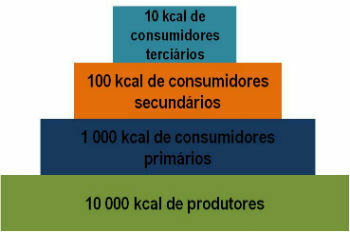The Red List of Endangered Species of the International Union for the Conservation of Nature and Natural Resources (IUCN) was created in 1964 and aims to inform the conservation status of species of living beings of our planet, with the exception of microorganisms. In addition, it seeks to alert everyone about the constant loss of biodiversity and function as a way to influence the creation of policies aimed at the conservation of these beings.
Several researchers and organizations around the world are working together to create this list, which is the most complete found today. The Red List is updated regularly, however, not all species are evaluated with each update. Generally analyzes of results are published every five years.
The list has nine categories in which the living being can be classified:
Extinct (in English, Extinct - EX): The last individual of the analyzed species died, that is, there is no specimen of this organism in nature.
Extinct in the Wild (EW: Extinct in the Wild): There are individuals of the species analyzed only in captivity, none in their natural habitat.
Critically Endangered (Critically Endangered – CR): The analyzed species is at extremely high risk of becoming extinct in the wild.
Endangered (EN): The analyzed species faces a high risk of becoming extinct in the environment.
Vulnerable (in English, Vulnerable – VU): The analyzed species faces a risk of becoming extinct in the wild.
Near Threatened (in English, Near Threatened – NT): The species is not threatened now, but could be classified at this level soon if conservation of such an organism fails.
Least Concern (LC): The species does not present as many extinction risks when compared to the other categories.
Do not stop now... There's more after the advertising ;)
Deficient data (in English Deficient Date - DD): It was not possible to gather data to assess the level of conservation of a particular species.
Not Evaluated (in English, Not Evaluated – NE): This classification applies to those species that have not been evaluated according to the Red List criteria.
By classifying some of the planet's species of living beings according to these criteria, the List IUCN Red helps us to be able to have a realistic view of the world in which we live. Each species classified as extinct is a great loss for the entire planet and directly affects the lives of other living beings.
The most recent update of the IUCN Red List was published on November 17, 2014 and brought alarming data. Among the species analyzed, 22,413 are threatened with extinction on the planet. In addition to these threatened species, some were included as extinct, including the giant Santa Helena scissors (Herculean labyrinth) and a species of Malaysian snail (Plectostoma sciaphilum).
It is noteworthy that most of the extinctions today occur as a result of man's actions, which introduces exotic species and destroys the habitat of several species. Thus, the need for increasing investments in the preservation of our biodiversity and in making the population aware of the importance of each species for the planet is perceived. If nothing is done about the countless endangered species, the list of extinct species will only continue to grow.
ATTENTION:When accessing the website of IUCN, you will also get other important information about each species, such as taxonomy, habitat, ecology and conservation strategies.
By Ma. Vanessa dos Santos
Would you like to reference this text in a school or academic work? Look:
SANTOS, Vanessa Sardinha dos. "Red List of Endangered Species"; Brazil School. Available in: https://brasilescola.uol.com.br/biologia/lista-vermelha-especies-ameacadas.htm. Accessed on June 27, 2021.


